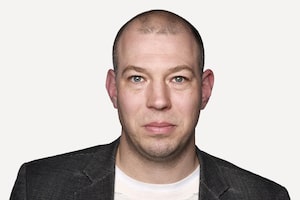
Construction hoarding outside Union Station bearing the name of Bondfield Construction Company on Jan. 14, 2020.Fred Lum/The Globe and Mail
Creditors to the Bondfield Construction group have won a major victory at the Ontario Court of Appeal, which upheld a ruling that Bondfield’s former president and his associates must pay back more than $33-million they siphoned from the companies through a false invoice scheme.
John Aquino, former president of Bondfield Construction Co. Ltd., and the other defendants in the case sought to overturn a 2021 decision that found them liable, under a provision of the Bankruptcy and Insolvency Act, to pay back tens of millions of dollars they secretly extracted from Bondfield. On Thursday, the Ontario Court of Appeal released a decision upholding the ruling, declaring that the payments must be returned to the court-appointed officers overseeing Bondfield’s assets.
Bondfield was one of Ontario’s largest builders of public infrastructure, including hospitals, schools and transit stations, until its collapse in 2019. The bankruptcy, which the Surety Association of Canada has called the most damaging construction insolvency in Canada’s history, has had ripple effects across the economy. Numerous subcontractors have not been paid for work already performed, and important public projects, such as the redevelopments of Toronto’s St. Michael’s Hospital and Cambridge Memorial Hospital in southwestern Ontario, remain incomplete.
When Bondfield entered bankruptcy protection in 2019, the monitor, Ernst & Young Inc. (E&Y), launched an investigation and discovered what it has alleged was a fraud. More than a dozen companies that appeared to have no real operations or even physical office space were paid tens of millions of dollars by Bondfield over about seven years for work that was never performed. Forensic investigators alleged that some of those payments flowed back to Mr. Aquino, who E&Y has alleged was the directing mind of the scheme. Auditors determined that the companies were linked to Mr. Aquino’s associates.
In 2021, Ontario Superior Court Justice Bernadette Dietrich found that about $22-million worth of those payments from Bondfield were “transfers at undervalue” – payments that take place within five years of an insolvency that were made, not for a real commercial purpose, but rather to put assets out of creditors’ reach. Similarly, Justice Dietrich found another $11-million in payments made by a Bondfield affiliate, Forma-Con Construction, were also transfers at undervalue.
Mr. Aquino and his associates appealed the decision. Mr. Aquino did not dispute the fact that the invoices were false and that Bondfield and Forma-Con received nothing in return for the payments. However, he contended that Justice Dietrich erred in her interpretation of bankruptcy law. He argued that she had incorrectly declared him and his associates to be personally responsible for the payments, when the debtor was actually Bondfield and Forma-Con.
The panel of judges rejected that argument.
Writing on behalf of the panel, Justice Peter Lauwers said the core aim of the section of the Bankruptcy and Insolvency Act that deals with transfers at undervalue is to allow creditors an opportunity to recover assets that have been improperly removed from an insolvent company.
The way to achieve that in this case, he wrote, is to ascribe “the fraudulent intentions of John Aquino to Bondfield and Forma-Con,” which is in keeping with the goal of “providing proper redress to creditors.”
The judges also dismissed the argument that the law didn’t apply to Mr. Aquino and his associates because, as they contended, Bondfield and Forma-Con weren’t in a financially precarious position when many of the suspicious payments were made. Justice Lauwers wrote that, in fact, there was evidence that the Bondfield group was “experiencing mounting financial difficulties” throughout the five-year period covered by the law. And even though the two companies were paying some of their bills during the time the scheme was being executed, that didn’t mean there was no intent to evade obligations to creditors, Justice Lauwers said.
One of the defendants, Giuseppe Anastasio, was linked to two companies that received more than $4-million through the scheme. He didn’t deny that those companies performed no work and that Bondfield received no value for the payments.
However, he contended that Bondfield owed him a US$3.75-million fee because, as it was teetering on bankruptcy, he introduced the company to Deutsche Bank, which considered providing a loan of $150-million. That unpaid fee, Mr. Anastasio argued, should be offset against the $4-million his companies received.
The panel upheld Justice Dietrich’s finding that this alleged debt should not be applied against the money the companies took: “Anastasio has not pointed to any palpable and overriding error, nor error of law, with respect to these findings.”
Lawyers for Mr. Aquino and Mr. Anastasio and one of the other defendants said they have been instructed to seek leave to appeal to the Supreme Court of Canada.
“The Court of Appeal’s decision raises several novel and important issues that would significantly benefit from review by the Supreme Court so that all Canadians could have the court’s guidance,” Michael Citak, Mr. Aquino’s lawyer, said in an e-mailed statement.
The monitor overseeing Bondfield and the bankruptcy trustee overseeing Forma-Con have launched separate lawsuits against Mr. Aquino, both seeking to recover payments that were made outside the five-year limitation period outlined in the Bankruptcy and Insolvency Act.
Your time is valuable. Have the Top Business Headlines newsletter conveniently delivered to your inbox in the morning or evening. Sign up today.
 Greg McArthur
Greg McArthur